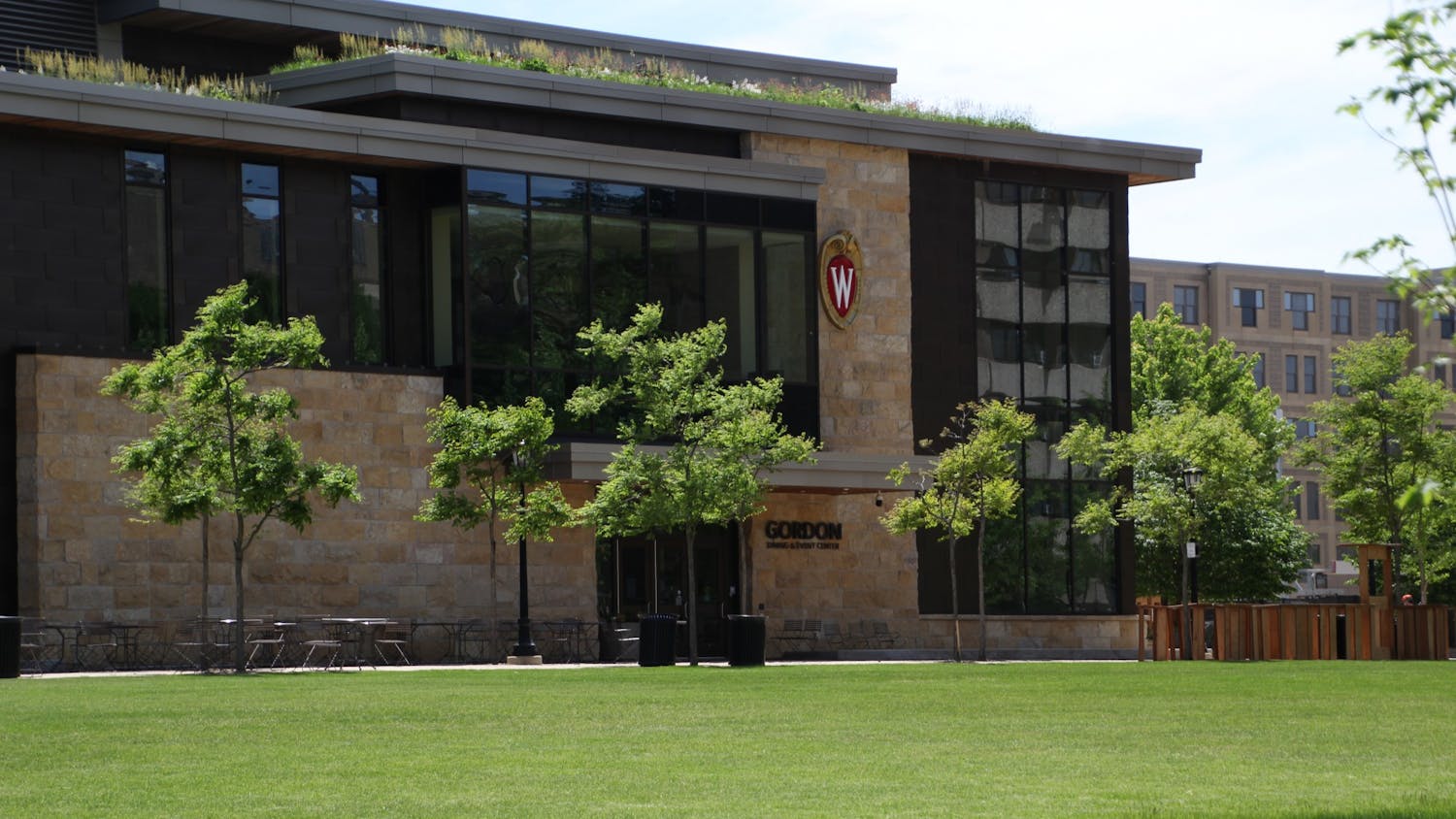In the past year, State Street has been a targeted location for redevelopment, a threat to many of Madison’s small businesses.
Several State Street businesses were displaced after the development firm Core Spaces submitted plans for a 10-story luxury apartment building at the intersection of State Street and West Gorham Street. In February, JD McCormick proposed demolishing three buildings on the 400 block of State Street to make way for a five-story multi-use structure.
B-Side Records, downtown Madison’s only remaining record shop, would be among the shops displaced. Owner Steve Manley fears that his 39 years working at B-Side may be coming to a close in the near future.
This conversation has been edited for clarity.
Could you talk about B-Side’s history as a longstanding State Street business as well as your experience owning and operating a record shop?
B-Side Records opened Oct. 9, 1982, at our current location, co-owned by two University of Michigan grads who had worked at an Ann Arbor store called Schoolkids Records who wanted to try starting a similar business elsewhere. They chose the tiny storefront at 436 State Street. I was in my final year of college at that time while also working at a sandwich shop a half block down State Street. Being a music fanatic, I began shopping at B-Side right away, gradually getting to know the owners and dropping hints about wanting to work there. Right after graduation I was hired part-time at B-Side and transitioned out of the sandwich shop.
Before long I learned all about running the store, ordering records and became manager of the store, with the promise from the two owners that they would sell me the store after a couple of decades. I ended up taking out loans to buy half the store in the early 2000s and the other half a few years later. This was a terrible time to buy a record store; hundreds of which had been dying off after the Internet got going, with its digital nature, file sharing, downloading, the iPod and so on, making CDs seem obsolete. Vinyl seemed dead for good. But I was committed to my dream and went through a financially dire few years when I had to run the shop by myself seven days a week. I now can afford a couple of part-time employees, one of which is my son Brendan. I've been working at B-Side now for nearly 39 years. It feels like home.
When did things start to turn around for B-Side?
In the mid-2000s, a few record store owners organized — with artists and record labels — an annual event — national, now global — in April called Record Store Day. The first one was in 2007, (during) which stores would offer limited-edition vinyl to collectors that would be available only in brick-and-mortar record stores that opted-in and ordered some limited-edition stock for that day. Initially, I was skeptical about this event but it turned out to be a pretty busy day. Over the years Record Store Day has increased awareness of records and record stores and what we offer: a human-oriented, tactile music shopping experience. RSD is now always our busiest day of each year by far. I credit the people who organized this far-fetched idea for the current vinyl revival.
Demand for vinyl has been increasing, especially among young people, ever since that first Record Store Day, even while supplies have decreased over the last few years. The industry cannot come close to keeping up with demand, in large part due to a fire at a California plant a few years ago — one of the only places in the world where the process of vinyl record manufacturing begins, the starting point of creating the lacquer masters from which vinyl copies can then be made. This global lack of origin plants has thrown the industry into chaos, with many thousands of in-demand record titles staying out of production for months or years. Even with this scarcity of available records from record companies, the revival of vinyl and its continued demand saved B-Side from closing shop for good back in the late 2000s. 20 years ago, no one predicted the vinyl resurgence, especially as it is driven by young people, even in this era of easy, free — or cheap — access to unlimited music by streaming. Even CDs and cassettes are showing signs of revival among young people. There are now enough people that want to build a physical music library to keep stores like mine in business.
What genres of vinyl records and CDs do you sell? Is your inventory self-curated?
B-Side's inventory is curated by me, shaped partly by my tastes plus what I sense might be in demand based on decades of street-level experience, listening to customers and my intuition. I select new releases that are issued every week based on research: reading about and listening to artists and songs before they come out in physical formats — vinyl, CDs and cassettes. I also keep a running inventory of what sells; I then can decide how many copies to restock. My inventory is over 90% unused, factory-new stock and includes most music genres with an emphasis on indie and classic rock/pop, jazz, hip hop, electronic, folk, country, blues, reggae, international and avant-garde.
What was your reaction to hearing about JD McCormick's plan to demolish the 400 block of State Street? What has JD McCormick’s line of communication with B-Side been like during this process?
In January, I learned about the landlord's plan to demolish our buildings to build a 5-story structure from a friend who spotted a notice on a city website. I was taken aback but not shocked, as rumors of such plans have been floating around for years, plus we have only been allowed a month-to-month lease for quite a few years now, so that gave me a clue that such plans could potentially proceed. Several weeks went by before local news outlets picked up on the proposal. A spokesperson for the developer/landlord made a statement to the press, the Wisconsin State Journal, claiming that they had been in contact with all the business tenants that would be facing demolition and that they were assisting us in relocation. When I read that, I was pissed off, because the landlord had made no contact with me about any of it.
When the Tone Madison news website got wind of that and published a story about my situation, there apparently was significant blowback, because the next day I finally got an email from the landlord, attempting to explain their side of the story. Their email didn't sufficiently explain why the corporation had not contacted me and had made these false statements to the press, and I let them know it. I immediately got a phone call from their employee who had made the claims of communication with me to the press. He was apologetic and took all the blame, saying it was all a misunderstanding. Anyway, the whole thing could have been avoided had the landlord attempted any contact with me about this demolition proposal. I'm over it, but it didn't feel okay at the time.
Do you believe that gentrification plays a role in the potential displacement of B-Side and other neighboring businesses?
These demolition (and) high-rise development projects have been accelerating downtown and all around the city in the past decade. I understand that we have a growing population that needs housing, but it seems to me there hasn't been a lot of consideration given to the irreplaceable architecture of old structures — two of three buildings proposed for this particular demolition were built in the 1890s — and the old-school charm and 'feel' they convey as one walks down State Street, an area which was never granted historical preservation status as a commercial corridor. Also, there should ideally be some percentage of newly-built apartments for low-income housing, but that doesn't seem to be happening.
Are you engaging in any efforts to remain in your location, or do you believe that B-Side will have to reconsider its future as a State Street business?
Many locally-owned businesses have already been displaced or destroyed from developments like this. It seems too late for action to that end, which is sad. The demolition of our buildings hasn't yet been approved by the Plan Commission, and demolition might still be rejected, but I don't hold out a lot of hope in a battle with developers in the long term. I wrote letters to city alders and the Plan Commission stating my case but there doesn't seem (to be) much else I can do. I've been working downtown for over four decades and State Street used to be almost 100% locally-owned businesses with no high-rises. Now we have a 7-11 and a Target — how dull. Retail is dying all over the world due to internet shopping but I feel there is potential for businesses like mine to survive in a city like Madison if conditions are made favorable for people who want to experience real-world, hands-on browsing.
What do you envision the future of State Street looking like?
Several large storefronts (and) former restaurants along State have remained vacant for eight, 10, 12 years or more, which is baffling to me. Are these landlords motivated to lease these spaces at a somewhat reduced, affordable rate? It seems not. Are there incentives in place to keep these storefronts vacant? It seems so. Perhaps building owners could divide these large spaces into smaller areas so locally-focused entrepreneurs might take a chance — just an idea. In any case, my intention is for B-Side to continue for a least a few more years, even if not at 436 State. If I have to move, ideally it would be somewhere nearby, despite sky-high downtown lease rates. It's all a tradeoff for high foot traffic.






